King's Field - FromSoftware Before Demon's Souls
The Soulsborne developer didn't always make Soulsborne games
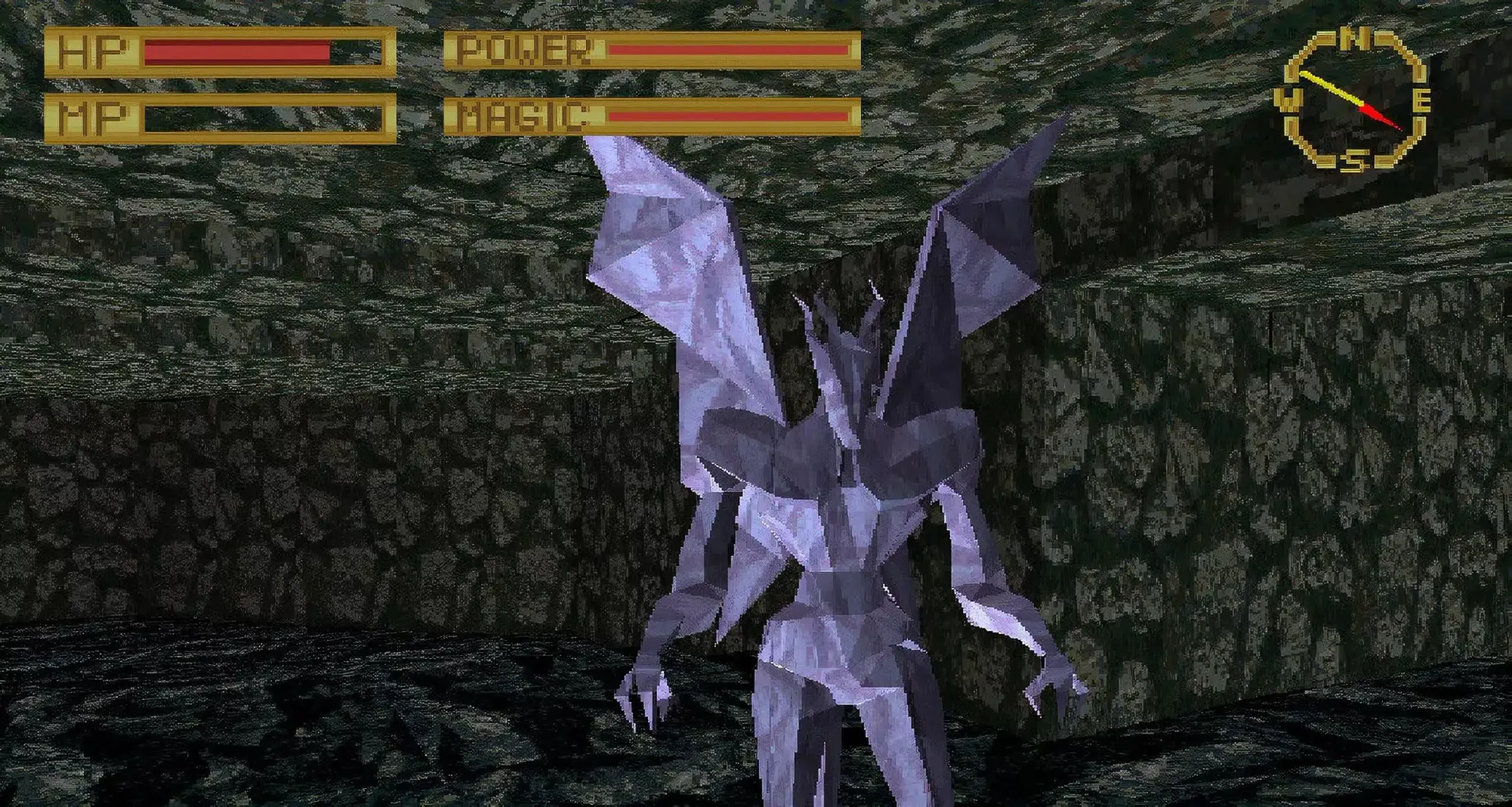
In the last decade, FromSoftware has become, in the minds of many gamers, a synonym for difficult games, and its success has created a new pseudo category of games often called Souls-like or Soulborne.
It's likely that everyone reading this has seen games being compared to Dark Souls, calling them "X is the Dark Souls of Y", a comparison often made by their difficulty. But FromSoftware started making games in the 90s, long before Demon's Souls was released. In this series, I'll cover games that I consider to have served as stepping blocks for Demon's Souls to be made.
First off, I'll be starting with their first game and franchise: King's Field. This is a first-person action RPGs, where you'll be exploring, left to your own devices with little direction as you get rid of the monsters infesting the world. With tough enemies, and starting as a weak character with little to no equipment, you'll need to be careful to not be downed before your adventure even begins. All of these 'features' will show up again in future FromSoftware games.
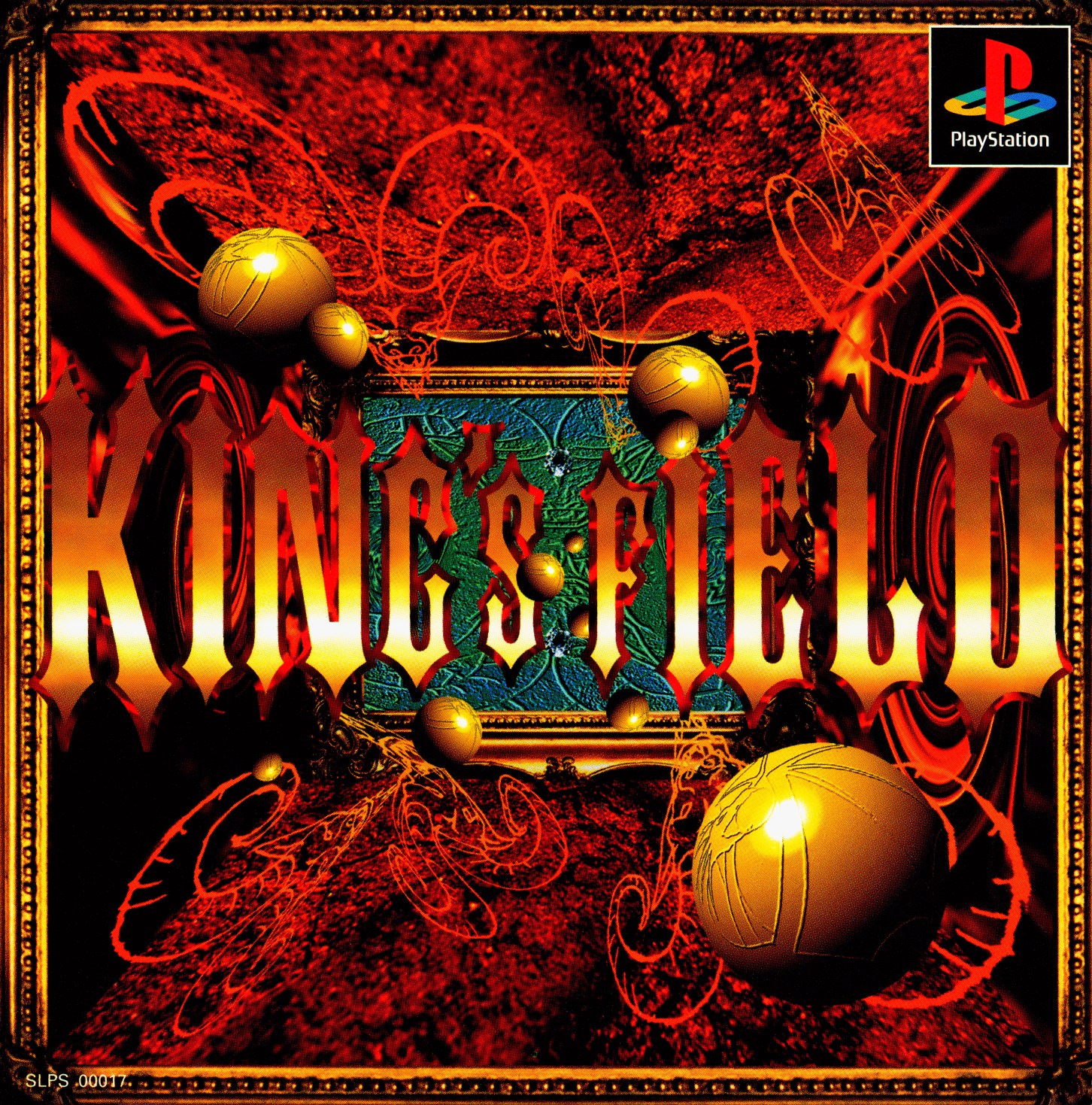
King's Field
It launched exclusively in Japan on December 16, 1994, just 2 weeks after the PlayStation - and it looks the part. It's the first RPG for the system, and it plays exactly how that would indicate. This is a "hate it or love it despite its flaws" kind of game, especially for those who didn't play it until much later.
When it was released, there were a number of first-person RPGs available for other systems - sequels from long-running series like Wizardy (popular in Japan, having manga, light novels, and even an anime, as well as inspiring many games over the years) and Ultima, and the start of The Elder Scrolls as a franchise. But they had a different focus with players having different classes, more control over their stats, and, in the case of Wizardry, turn-based combat with a party.
Meanwhile, King's Field had a limited amount of NPCs and the focus was on interacting with the world in order to advance through the comparatively limited, but almost fully 3D modelled world.
Setting
The royal cemetery has suddenly been overrun by evil creatures that threaten the peace of the kingdom. A squad of soldiers commanded by your father is sent, but they haven't been seen since. Worried about his father's wellbeing, John Alfred Forrester decides to step into the cemetery in order to find him.
This is the basic setup of the plot, but there is very little direct storytelling to be found in the game. In what would come to be a FromSoftware trademark, the story is buried in the gameplay, the environment, and the NPC interactions, such as they were.
If you are interested in the whole story of the Verdite trilogy (King's Field 1 through 3), then you should check its dedicated article.
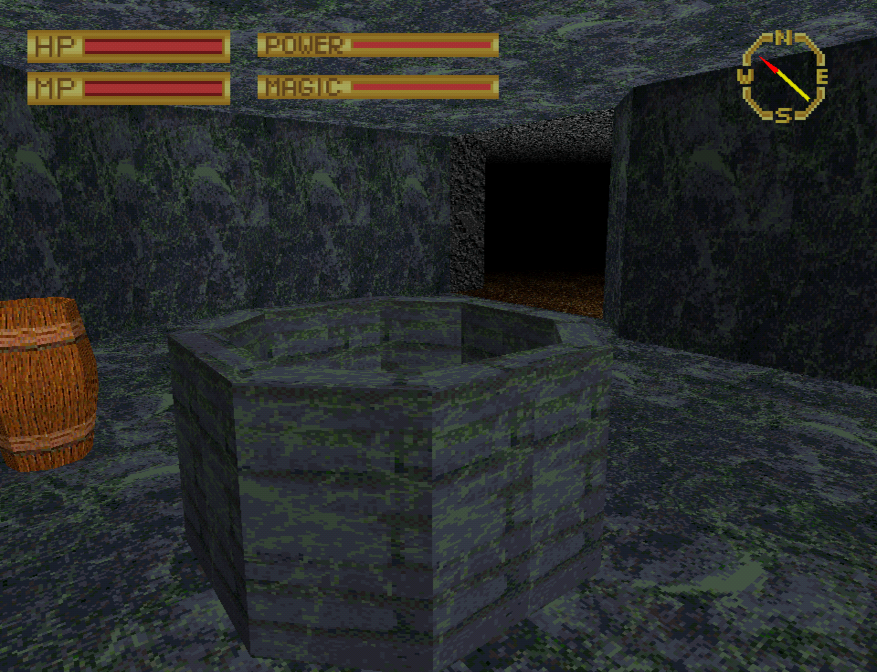
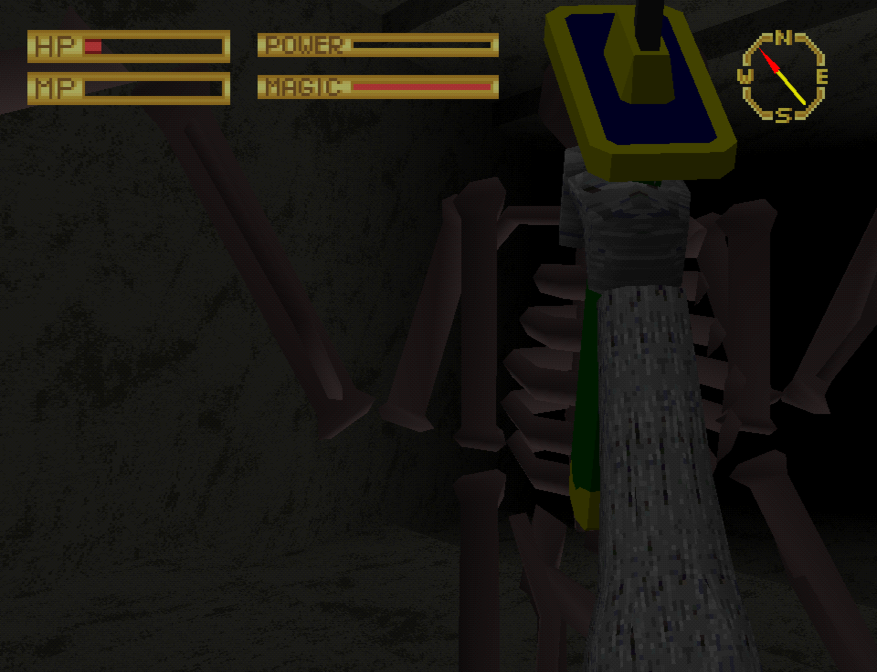
King's Field. Source: Author.
Presentation
When you start the game, you'll notice the simple geometry for the rooms and the limited and repetitive textures. Most doors don't even have a "door texture" and instead reuse the same texture as nearby walls, which might fool new players into thinking it's not a door.
King's Field runs at 20 FPS with some slowdowns. This sort of thing wasn't uncommon at the time, but it could irk new players already used to higher frame rates.
Having said this, almost every element in this game is 3D. It's not only the enemies, but your equipment and even random items like herbs are all 3D; the only exceptions are fire and wind disc attacks.
Despite how dated it looks, the game still does a good job of establishing the setting of an oppressive, dark world full of danger. The music somewhat helps with this, but if you aren't playing in short bursts, you'll probably get tired of the few songs it has as they aren't that long, though thankfully, you have the option to turn the music off.
Outside the music, you'll only hear sounds when you or the enemy take damage or attack (this can often alert you of their presence before they are actually visible), or when interacting with objects.
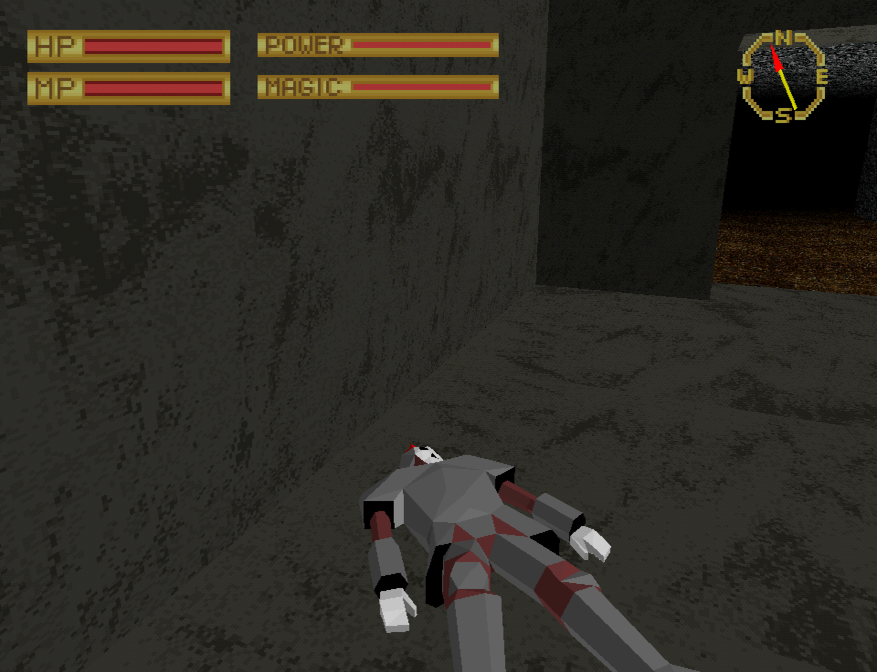
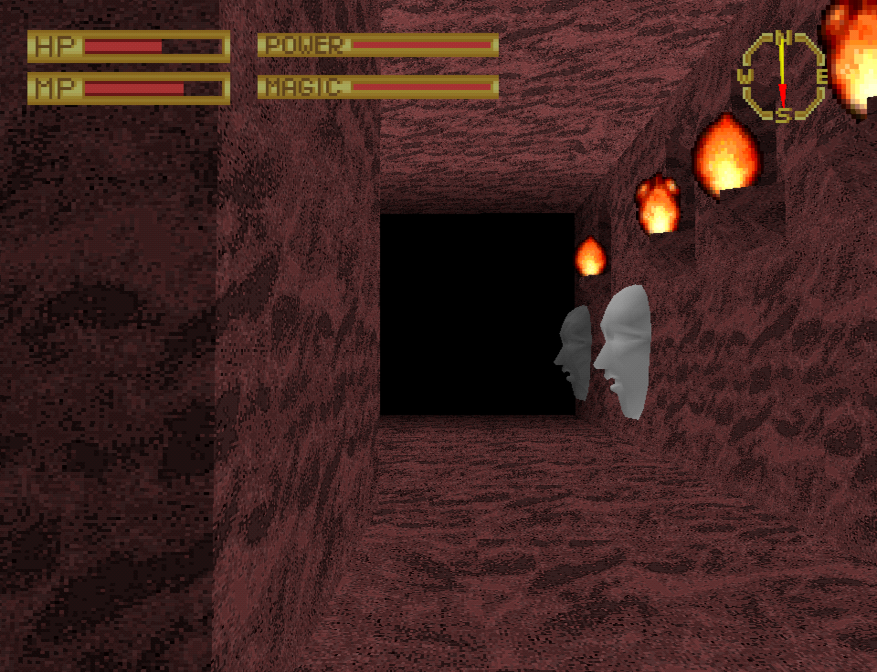
If you aren't careful you'll end up like this poor soldier. Source: Author.
Gameplay
The gameplay can be described as slow, running at 20 fps which was not unusual at the time. You move and attack slowly as well, you're disincentivized from spamming the attack button, and you initially have no way to restore your MP, so your magic won't last long. This could be described as a zero-to-hero kind of game, and boy are we a zero at the start.
The game uses tank movement, though you can use the shoulder buttons to strafe. This is very useful to circle strafe enemies, necessary for combat to flow a little faster, and you'll occasionally have to use the trigger buttons to aim your magic and to aim up and down based on the size of the enemy.
King's Field won't tell you your enemy's level, their life, how much damage they are taking, or how much experience you're getting, so encountering a new type of enemy requires caution, especially as some can inflict status effects. In order to attack there is a separate bar for magic and melee attacks. The bar depletes as the player attacks, and in the case of magic, it acts like a cooldown meter. In the case of melee, you can attack again even if the bar is partially filled, but doing so will limit the damage it does, so it's better to wait for it to be full.
Because damaging the enemy will produce a short stun lock and cancel any attacks they were making, you can use magic in order to safely attack the enemy. If you have no MP and no space to circle strafe then you'll need to back up enough for the enemy to stop targeting you, so it starts roaming around. Enemy pathfinding is rudimentary and there are invisible walls that only affect them so you can attack safely, attack its back and retreat to repeat as many times as necessary.
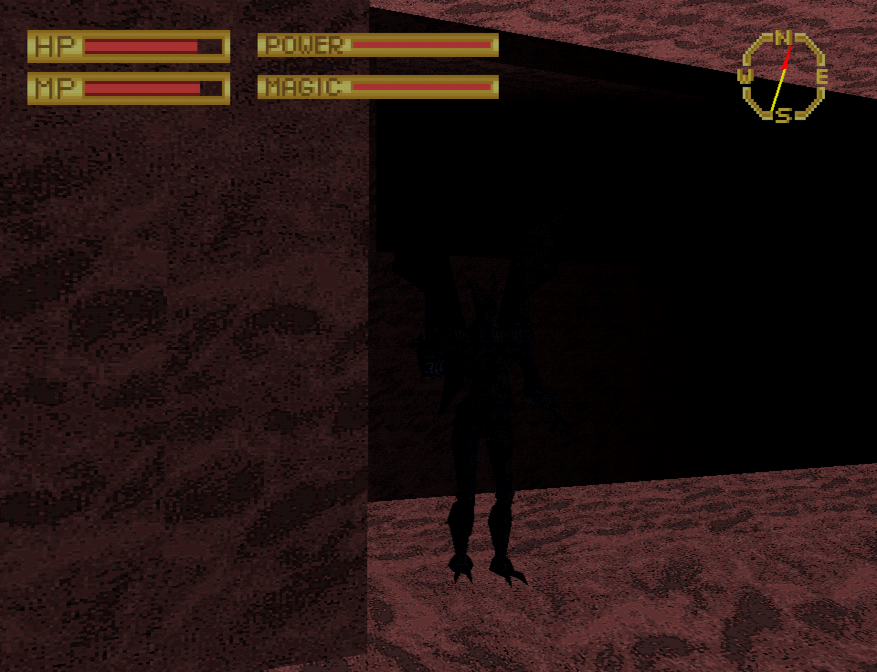
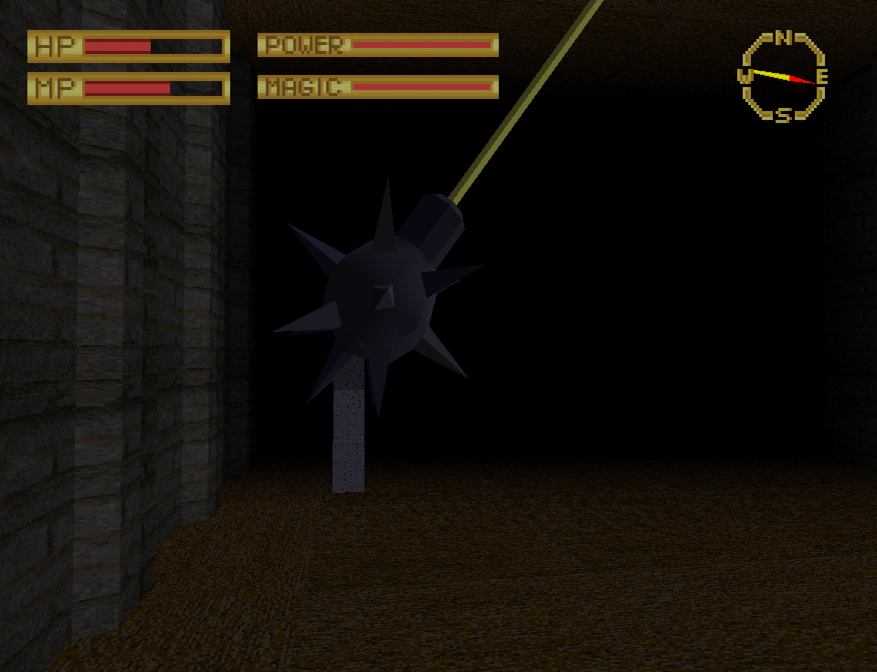
Enemies aren't the only thing that can damage you. Source: Author.
The big problem at the start is that you have no armor, little strength, and a weak weapon. The only way to heal is to use the limited herbs you find around, and for MP you're out of luck until you restore the fountain. It can fully restore you, and while there are dragon tree fruits that can also restore you, they are limited in quantity, so they should be used sparingly. Even leveling up won't restore your stats, so don't count on that. You have a single melee attack, but the different weapons you find have different stats, and while some are an outright upgrade from previous weapons, others are more situational and depend on the enemy you're facing.
You only know a single magical attack at the start, but you'll learn a few more in the course of the game, though you must "equip" one of them as if it were a weapon. Additionally, you'll learn a handful of magic designed to heal you, but your MP is better spent at stun locking the enemy to prevent attacks, rather than healing from them.
As far as difficulty goes, the combat is at its hardest at the start. After you get some better gear (either by buying it or finding it in the world) and have access to the fountain, your biggest enemy will become exploration, as the game has 5 floors which get increasingly trickier.
You can only save the game when in front of a cross, but you can load at any time. Dying after activating the dragon fountain and while carrying dragon fruit will revive you at the fountain. Otherwise, you’ll lose all progress and start over, though you can still load your previous save.
The first floor contains the fountain and the only two stores in the game - while you can buy gear there, I recommend saving your money for an item that's required to progress the story. Outside some locked doors that require keys in order to open, the first floor is relatively straight-forward, but things will become more complex as you progress.
Also note that the as you go down you'll see some enemies repeat from previous floors, but even though they look the same, they'll actually be stronger. They shouldn't be as troublesome as when you first found them on a previous floor, but bearing this in mind can prevent you from taking some unexpected shots.
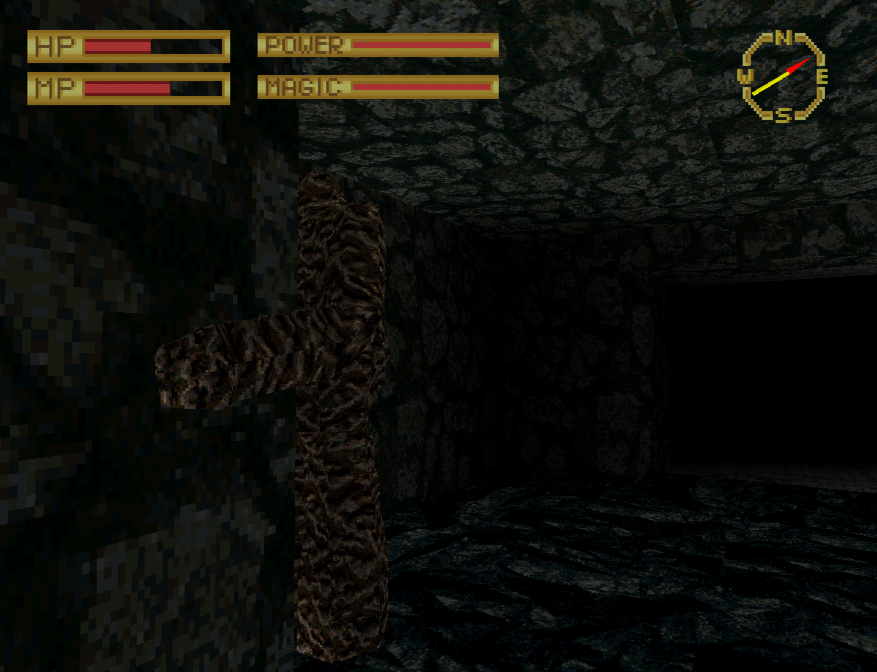
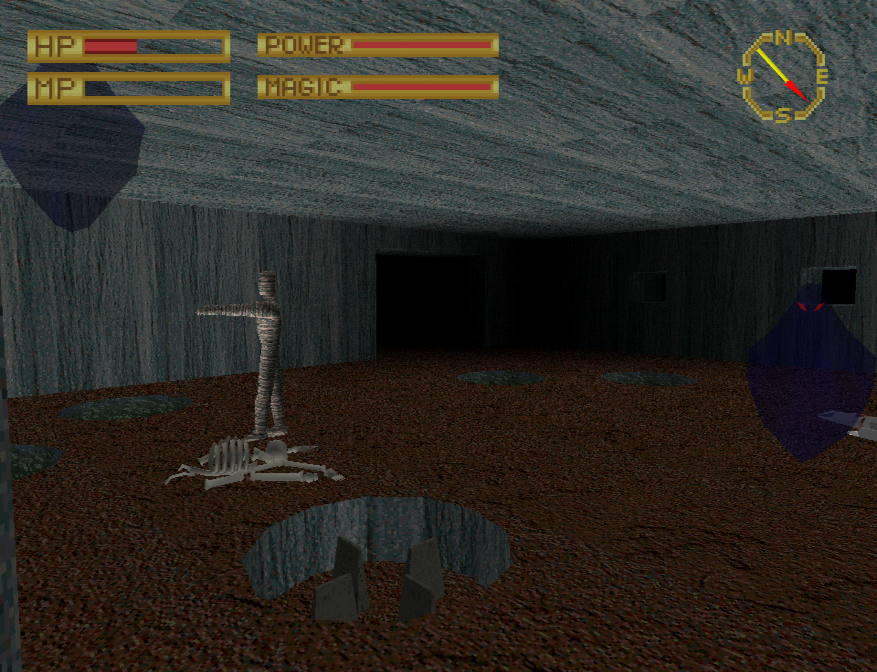
Those holes in the ground will damage you, avoid them whenever possible. Source: Author.
The game features traps in the form of hallways with arrows or giant spiked pendulums that you have to turn off or avoid, holes in the ground containing poison or damaging shards, and even bottomless pits that will kill you if you step over them. It also features a multitude of fake walls - some are even behind traps - that you'll need to locate in order to progress. Most are optional and will give you items instead; your best gear will likely be found by accident.
While you can find a map on the first floor, it won't contain all the hallways nor the locations of the few NPCs that exist in the game. It gives little to no direction of where to go or what to do, and even the items have no descriptions, so you'll need to try them to see what effect they have.
Adding to the obtuse nature of the game, some items only work in certain places, and opening locks requires you to manually try all your keys to see if any of them work. There isn't even an easy way to see the stats of your equipment, as you'll need to equip each item and then go to the status page to see how your stats changed.
If you want to squeeze some context and story out of the game, you'll need to find the Truth Mirror or read the game manual for info on a few characters, and remember to talk to characters several times to exhaust their dialogue.
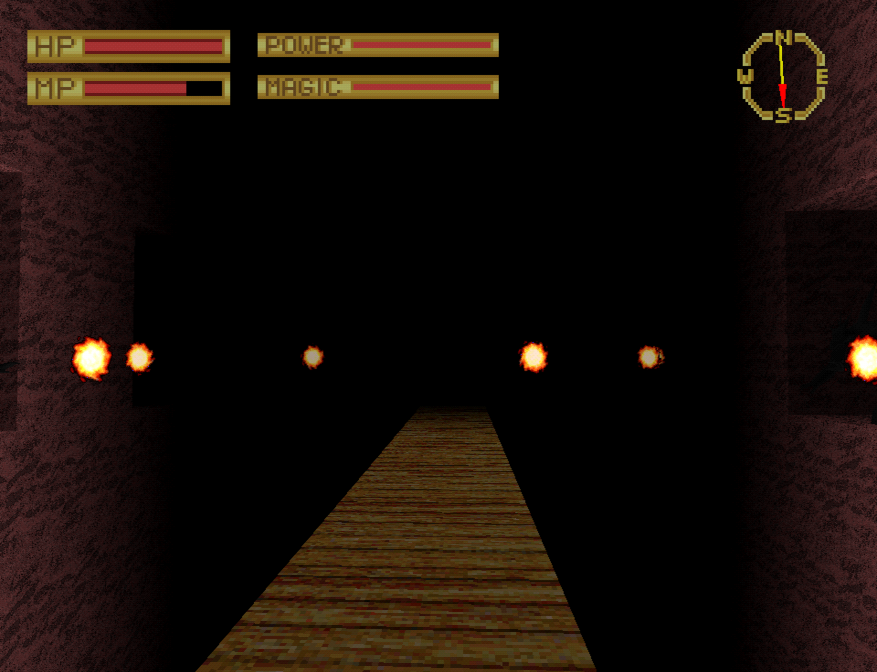
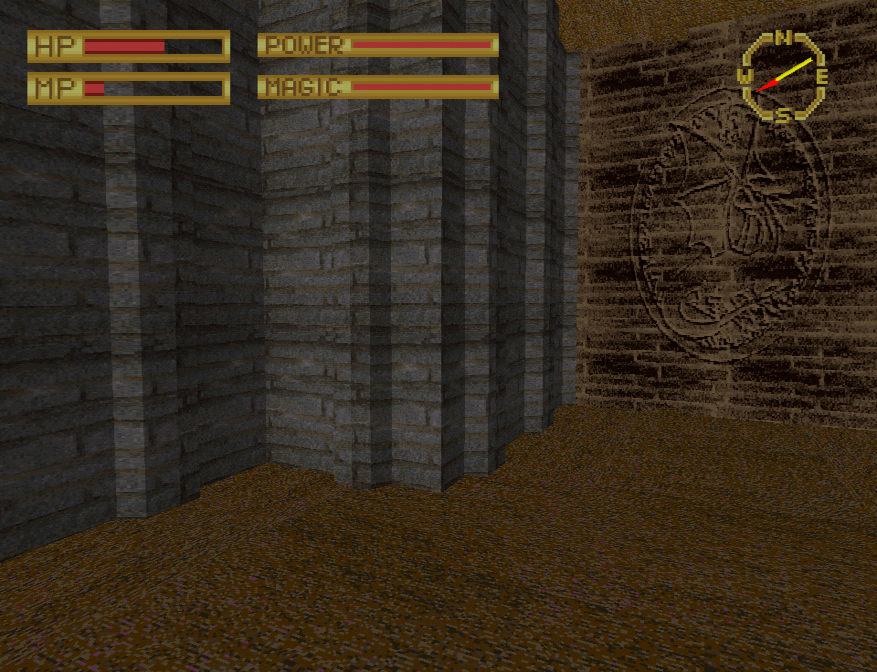
Better note down the location of those sealed doors, they'll be useful later. Source: Author.
Conclusion
The strength of this game is also a source of frustration... its exploration. The game will do very little to guide you through its maze-like locations, which will make many frustrated players lose interest. For those who decide to persevere and manage to beat the game, they'll feel rewarded for their own efforts, as they'll have finished the game despite all the difficulties thrown at them.
This certainly isn't a game with wide appeal, and I'd expect most people to turn it off within 15 minutes. But if you can stomach the combat and slow movement, and the idea of exploring on your own accord and piecing together the story sounds interesting to you, then you might find it to be a special game with nothing else quite like it.
Note that this game never left Japan, but there's a fan translation project available. King's Field can be bought on the Japanese PlayStation Store for the PS Vita and the PS3 (while the store lasts).
